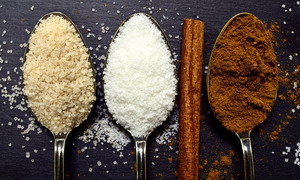What is the most commonly deficient nutrient in the American diet? As you might guess from the title of the article, it is magnesium. As a rule Americans get most of the vitamins and minerals they need to prevent actual deficiency diseases like scurvy or beriberi due to the enrichment of common foods like flour, milk, and salt. This is not to say that we get what we need to be actually healthy, but enough to avoid specific nutrient deficiency diseases. There is a huge gap between health and disease where most of us live. This is where we experience non-life threatening symptoms that make us miserable, but which medicine is not particularly interested in because they are busy saving lives.

Magnesium is absolutely vital for life, but most people have never even heard of hypomagnesia: insufficient dietary magnesium. Magnesium is essential in over three hundred physiologic functions in our body. It is necessary for protein synthesis, muscle and nerve function, energy production, bone formation, heart rhythm regulation, blood sugar and blood pressure control. But lets check out a partial list of symptoms associated with low magnesium levels and see if any of them relate to you.
Fatigue, low energy
Cramps and spasms
Tremors
Weakness
Irritability
Anxiety or hyperexcitability
Apathy or confusion
Insomnia
Poor memory
Learning difficulties
Sensitivity to light and sound
Loss of appetite
Insulin resistance
Irregular or rapid heartbeat
Tingling or numbness
Nausea or vomiting
Migraines
Personality changes
Delirium, hallucinations
High blood pressure
Diabetes
Heart failure, coronary seizures

So as you can see, the effects of magnesium are all across the board. This is because magnesium is essential in the energy formation pathways every one of our cells use. Magnesium and calcium balance each other in the control of muscular contractions and should be consumed in your diet in equal quantities. This has become a problem with everyone taking calcium for their bones in that folks are getting too much calcium and not enough magnesium. Some partially responsible supplement companies combine calcium and magnesium in their products, but this fails because both of these minerals compete with each other for digestion in the gut resulting in only half of each actually being absorbed.
Calcium and magnesium have opposite effects on the nervous system. Calcium revs things up by promoting the excitement neurotransmitters, while magnesium calms things down by promoting the calm and relaxed neurotransmitters. This is similar to their effects on muscles.

Where do we get magnesium in the normal diet? Magnesium is the central component of chlorophyll, the molecule that makes plants green and allows them to produce plant material from sunlight, water, and air. It also is found in nuts, seeds, and dairy products. Unfortunately our soil is becoming depleted in magnesium. Compared to 100 years ago there is 60% less magnesium in the soil and in the food grown from this soil. We now have to supplement this nutrient directly. Our food just does not contain all we need anymore. Magnesium is a macro-nutrient like calcium and should be in a 1:1 ratio with calcium – about 700 milligrams of each per day. Due to a translation error a long time ago, we got the mistaken impression that we should consume twice as much calcium as magnesium. Not so. Being a macro nutrient, where we need about 100 times as much as the vitamins like the B vitamins, it is hard to enrich our foods with it without affecting their taste. So we have to supplement it.

Things that decrease our magnesium absorption also need to be considered. Certain drugs greatly decrease magnesium absorption. The most common drugs that do this are the stomach acid drugs called proton pump inhibitors. Certain foods like grains and certain plants that contain phytates and oxalates also bind up magnesium and stop its absorption. Glyphosate (Roundup) is a chelator that also binds magnesium and that is one more reason to eat only organic foods. Chronic alcohol use also decreases magnesium uptake, as well as chronic stress and uncontrolled diabetes. Another consideration is that to be properly used in our body we need to be sure we are getting enough vitamin D and K2. Magnesium, calcium, vitamin D3, and Vitamin K2 all work synergistically together and need each other.

So what kind of magnesium should we take? Magnesium in its pure form is a highly reactive metal. It is used in flares and fireworks. In nutritional form magnesium is always bound to something else. What it is attached to determines how well absorbed it is and also affects what impact it has on us. For instance magnesium oxide, citrate, and sulfate are poorly absorbed and work as a laxative for our bowels. Magnesium carbonate functions as an antacid. Magnesium lactate and chloride are only 12% magnesium, but better absorbed. Magnesium chloride is what I make my magnesium oil out of for skin absorption of the magnesium. Magnesium threonate is a form that is better absorbed into the brain for influencing brain chemistry while magnesium taurate has taurine in it which helps calm the body.
The best absorbed magnesium supplements are magnesium glycinate and malate. They are more expensive, but you get more ‘bang for your buck.’ I especially like the magnesium malate because of the malic acid bound to it. Malic acid is one of the critical limiting components in the Krebs cycle energy production pathway in every cell. By using magnesium malate, I get a double action of both the benefits of the magnesium plus the benefits of the malic acid. This really shows up in significant energy production diseases like fibromyalgia and chronic fatigue syndrome. Malic acid is naturally found in apples and pears giving them a pleasant tart/sour taste.

I take a teaspoon of magnesium malate every day which provides me with about the 700 milligrams of magnesium I need. I have some in tablet form, but I prefer just adding the powder to my smoothie in the morning. It gives things a bit of a lemon-like flavor because of the sour effect it has. I could just add it to water with a touch of stevia for a lemonade flavored drink.
The bottom line: If you are not taking magnesium every day, then start doing so. It is the most common nutrient deficiency around. That means unless you are eating five pounds of organic green vegetables, seeds, and nuts every day, you are deficient. If you are under chronic stress, take stomach acid meds, eat grains, drink too much, or have diabetes, then you are deficient. If you have any of the symptoms above, then you are likely magnesium deficient. Since I am writing this article, I thought I would make available some powdered magnesium malate like I take. A one month supply (30 level teaspoons) of 120 grams should meet your magnesium needs nicely with the added boost of the malic acid for more energy and should only cost $9. You could also purchase it on Amazon here in a larger size.
